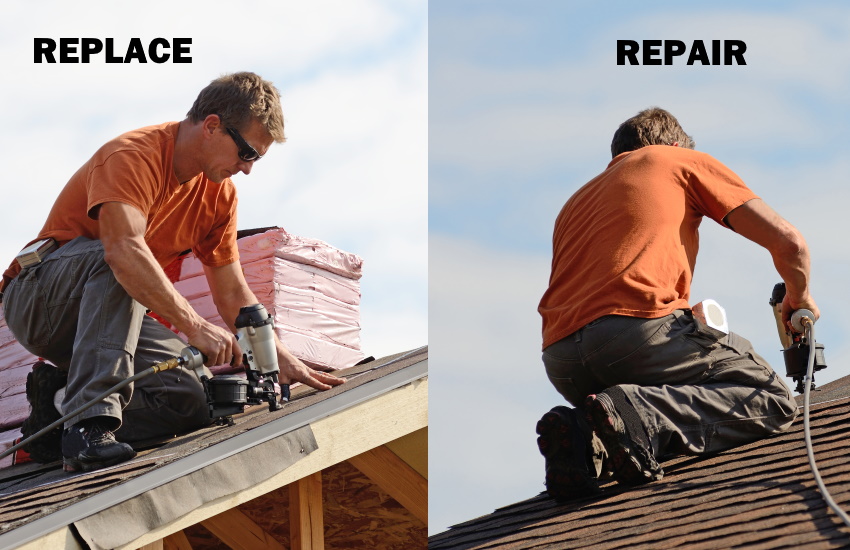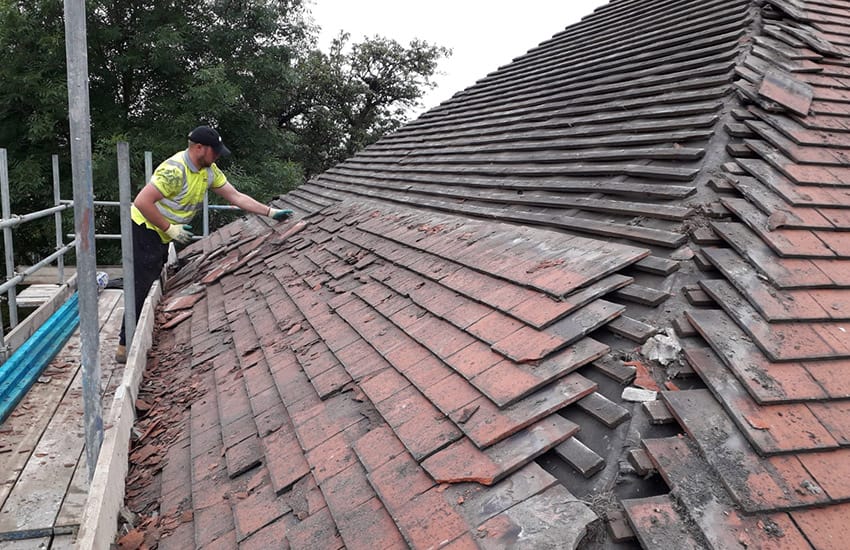Exploring the Different Kinds Of Roofings: Which One Is Ideal for Your Home?
When thinking about the myriad types of roof coverings offered, it is critical to evaluate how each option aligns with your home's unique requirements, including climate problems, visual choices, and structural functionality. From the classic gable roof that efficiently channels rain to the modern-day level roofing offering metropolitan adaptability, each style offers distinctive benefits and difficulties.
Gable Roofings
Saddleback roofs, defined by their triangular shape and sloping sides, are a preferred selection amongst homeowners seeking both visual charm and functionality. This roof design successfully permits efficient water drainage, minimizing the danger of water pooling and subsequent damage. Additionally, the high slopes create enough attic space, which can be utilized for storage space and even converted into living locations.
One of the primary advantages of gable roofings is their ability to stand up to harsh weather conditions. The style helps in decreasing wind resistance, making them especially suitable for locations susceptible to tornados. Moreover, saddleback roofs can be created utilizing a selection of materials, consisting of roof shingles, floor tiles, and metal, providing home owners with flexibility in design and spending plan.
From an architectural viewpoint, saddleback roofs can boost the visual charm of a home, offering a traditional and classic appearance. They can complement different building styles, from standard to modern styles. Nonetheless, it is vital to take into consideration potential downsides, such as the susceptibility to snow build-up in cooler environments. Overall, saddleback roofs continue to be a favored option because of their equilibrium of practicality and style, attracting a vast array of property owners.
Apartment Roofs
While often overlooked for even more standard roofing system styles, flat roofing systems use special advantages that deal with particular architectural needs and modern design preferences. These roofs are characterized by their marginal pitch, permitting for reliable use area, particularly in urban settings where optimizing square video footage is necessary.
One significant benefit of level roof coverings is their adaptability. They can be used as additional living spaces, such as roof yards, outdoor patios, or solar panel installations, boosting the performance of a home. Moreover, level roofings are usually easier and more secure to navigate during upkeep, assisting in repair work and examinations without the difficulties posed by high slopes.
Level roofing systems can additionally be a lot more cost-efficient in terms of products and setup. With a simpler style, they usually require less resources, converting into reduced labor costs. Nevertheless, it's crucial to think about drainage and waterproofing, as level roofings can be prone to merging water otherwise effectively designed.

Hip Roof Coverings
Hip roofing systems attract attention for their stylish style and architectural integrity, making them a popular option amongst home owners. Characterized by slopes on all four sides, hip roofs supply a healthy visual that enhances various architectural styles - roof repair oahu. The symmetrical nature of these roofing systems assists to disperse weight equally, boosting security and resilience
One of the essential advantages of hip roofings is their capability to stand up to rough climate problems. The sloped surface areas promote reliable water drainage and snow overflow, minimizing the danger of leaks and structural damage. Additionally, the design reduces wind resistance, making hip roofing systems less vulnerable to wind uplift compared to various other roof kinds.


Shed Roofings
Dropped roofings, as opposed to the intricacy of hip roof coverings, provide a minimalist and structured design that allures to modern aesthetic appeals. Characterized by a single sloping surface area, dropped roof coverings are typically made use of in contemporary style, garden sheds, and other useful structures. This simpleness not just enhances visual appeal however additionally enables effective water drainage, making them suitable for different environments.
One of the primary benefits of shed roofings is their cost-effectiveness. With less products required and a simple setup procedure, home owners can conserve both money and time. The design also permits the incorporation of big windows or skylights, promoting all-natural light and creating large insides.
Nonetheless, it is important to consider the possible downsides, including minimal insulation options and the demand for cautious layout to stay clear of too much warm accumulation. Furthermore, dropped roofings may not blend perfectly with traditional style, which might be an issue for some property owners.
Eventually, shed roofing systems present a practical and fashionable roof service for those seeking modernity and performance. When picking a roof covering type, assessing personal useful needs and visual preferences will certainly assist house owners to the best selection for their one-of-a-kind requirements.
Mansard Roofing Systems
Mansard roofing systems, characterized by their unique four-sided style, are a click now hallmark of French architecture that combines sophistication with performance. This building design includes two inclines on each side, with the lower slope being steeper than the upper one. The special setup permits for extra space in the top levels, making it an ideal option for homeowners looking for to maximize functional area without broadening the structure's impact.
Among the considerable benefits of a mansard roof is its convenience. It can be adapted to different building styles, from standard to modern, improving the visual appeal of any type of home. Furthermore, the adequate area produced under the roofing system can conveniently accommodate dormer windows, which enable natural light and ventilation, additional boosting the comfort of the living area.
Nevertheless, possible homeowners ought to think about the upkeep requirements associated with mansard roofings. The high inclines can lead to enhanced wear from weather condition direct exposure, demanding normal inspections and repair services. In addition, installation costs may be greater contrasted to less complex roof covering layouts due to the complexity of building. Eventually, a mansard roofing can be a superb selection for those focusing on style and space.
Conclusion
To conclude, the option of an ideal roofing type depends upon specific demands, environment considerations, and aesthetic choices. Each roof style offers one-of-a-kind advantages, such as the effectiveness of saddleback roofs, the modern allure of shed roofings, and the stability of hip roof coverings. Moreover, flat roofs supply functionality for urban settings, while mansard roof coverings offer additional space regardless of higher installation prices. Ultimately, an extensive assessment of these factors will web link certainly guide homeowners in making a notified decision.
From the traditional gable roof that effectively networks rain to the modern level roofing offering city adaptability, each style provides distinctive advantages and difficulties (roof repair oahu). In addition, the style minimizes wind resistance, making hip roofs less prone to wind uplift contrasted to various other roof types
Dropped roof coverings, in comparison to the intricacy of hip roofs, provide a minimal and structured style that appeals to modern-day visual appeals. Each roofing design offers distinct benefits, such as the performance of gable roofs, you could try these out the modern appeal of shed roofings, and the security of hip roofings. Level roofing systems use usefulness for city settings, while mansard roofings supply added living area in spite of higher setup expenses.